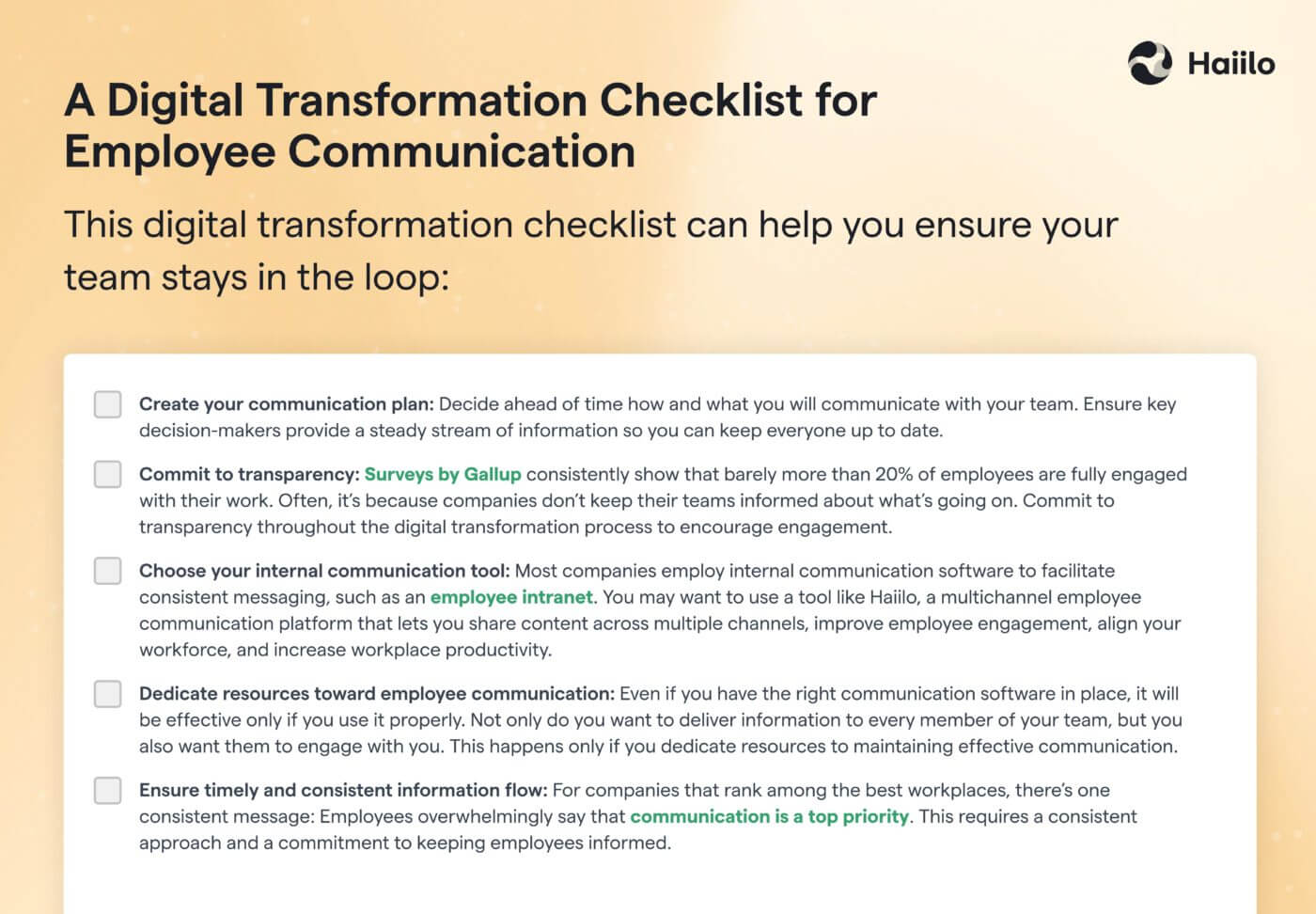Today, building a successful business is all about enabling cross-functional collaboration in the workplace. But COVID-19 makes it challenging for leaders to support their teams as most employees are working remotely during the pandemic.
📚Check out Why Employee Communications are Better Internal Comms.
Teamwork is appreciated more than ever before, and employers are now looking for employees who can really show that team spirit and collaborate with their coworkers efficiently.
As the coronavirus crisis is spreading at a fast pace, cross-functional collaboration plays an even more important role today. Indeed, teams’ ability to communicate and collaborate will have a direct impact on whether the company will recover from the crisis.
In this blog post, we will go over some of the most common challenges team leaders face when it comes to cross-functional collaboration and we’ll share best practices for fostering collaboration among remote employees during the pandemic.
Make sharing information and collaborating on the projects seamless with a proper IC platform
What Is Cross-Functional Collaboration?
Essentially, cross-functional collaboration is a process in which a group of people with different functional expertise or from different job functions come together to work towards a common goal.
When talking about cross-functional teams in the workplace, the team is simply a group of people from various departments across the business who work together on solving a specific problem.
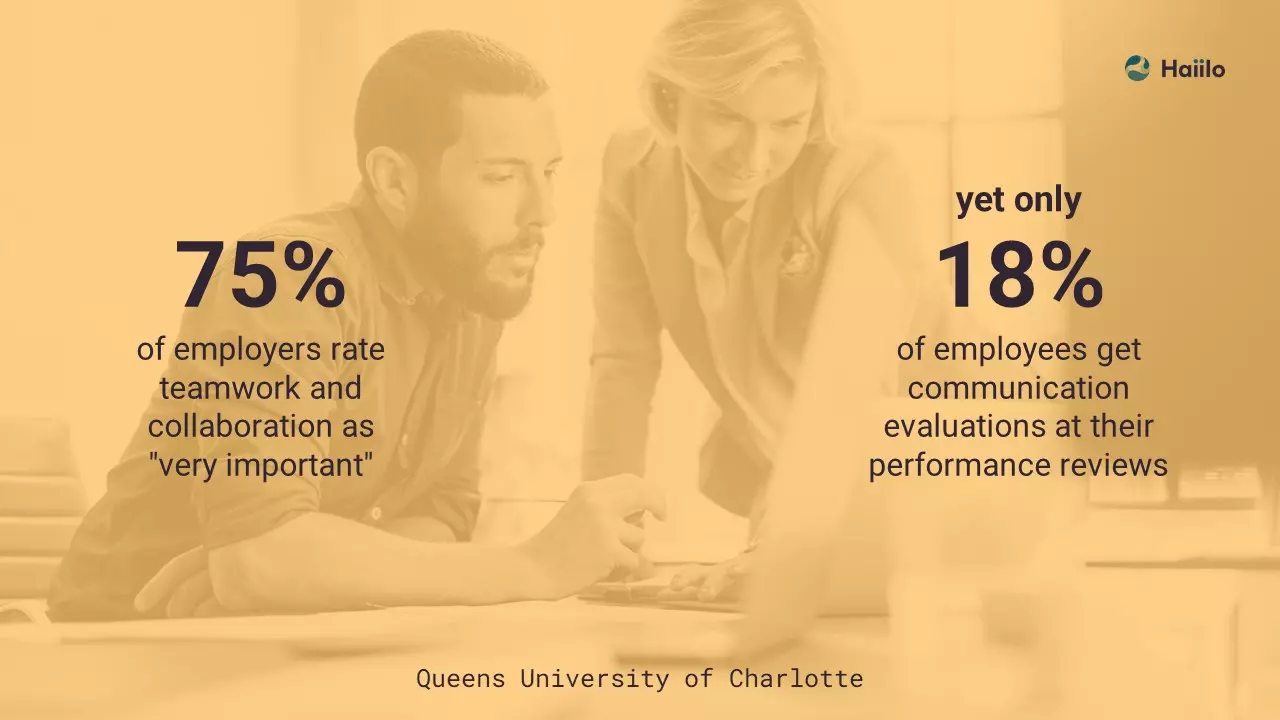
During less tumultuous times, there are very few projects that can be completed just by one person or a group of people with the same skills, knowledge and experience. Employees from different areas of expertise have to come together to solve problems or implement new solutions.
Cross-Functional Collaboration Is Even More Important Today
Collaboration among employees and teams is even more critical these days. Indeed, a crisis such as COVID-19 impacts every part of the business (production, sales, marketing, customer support…). As a consequence, the response requires cross-functional work.
Every company is different, but it is likely that most businesses are requiring their HR, legal, IC, marketing, corporate comms, crisis communication, and change management teams to build a solid strategy to overcome the COVID-19 crisis.
Even though employers consider teamwork and collaboration as “very important”, not many employers test and evaluate their employees’ communication skills and their ability to collaborate efficiently.
Again, things may change because of the pandemic.

As communication and collaboration play a critical role during the coronavirus crisis, it is most likely that IC practitioners are going to pay close attention to internal comms data.
Indeed, PwC’s 2019 Global Crisis Survey found that three-quarters of those in a better place post-crisis strongly recognise the importance of establishing facts accurately during the crisis.
5 Benefits of Effective Cross-Functional Collaboration
Putting together people from various departments to work on the same project has many benefits.
As these people may come from various backgrounds, their individual contributions are important because they may look at situations from various perspectives.
Even though cross-functional and team collaboration can be associated with many challenges, most employers have realized the importance of improving cross-functional collaboration in their workplaces, especially these days.
Let’s go over some of the biggest advantages of cross-functional collaboration in the workplace.
1. Innovation
As every employee looks at a problem from their own perspective, cross-functional teams are most likely to come up with more innovative solutions than when people from a single team work together on a project.

As companies tend to create diverse cross-functional teams, brainstorming and idea generation practices usually result in success.
2. Knowledge sharing
More and more companies are trying to close skill gaps in the workplace. Meaning, they are trying to train people internally to learn new skills necessary for delivering projects around digital transformation.
That’s because knowledge sharing among cross-functional teams is very important.
Forming cross-functional teams is a great way to help employees grow and gain new skills necessary for an organization to stay competitive in the market.
3. Employee engagement
Research shows that employee engagement levels in the organizations are very low and that it has a direct impact on business profitability.
Working in teams motivates people to work together towards the same goals.
What’s more, employees like to know that their individual work contributes to the team as a whole. Shifting to a team-oriented structures can boost team bonding, improving workplace dynamics.
4. Improved communication skills
Communication skills are one of the most in-demand soft skills an employee can have nowadays. These skills are most of the time evaluated in the candidate selection process.
Read on: Top 5 Communication Skills and How to Improve Them
Effective communication is the cornerstone of any team for successful projects. It is an art that can make or break your team.
Clear, frequent and concise communication encourages sharing of ideas between cross-functional teams. Therefore, cross-functional collaboration is a great way for employees to improve their communication skills.
5. Organizational culture & team spirit
Many employers are trying to embed new employee behaviors when it comes to working in teams.
Not only that cross-functional teams are more successful working on projects, but they also get to know their colleagues from different departments that they might never meet before.
Read on: Company Values: Definition, Importance and Examples
Common Cross-Functional Collaboration Challenges
Managing cross-functional teams is not an easy thing to do.
Different positions, cultures, leadership styles, areas of expertise and soft skills among employees make cross-functional collaboration much harder than managing people from the same team.
🗺️ Below is a map that shows the most common team collaboration challenges organizations are facing around the world:
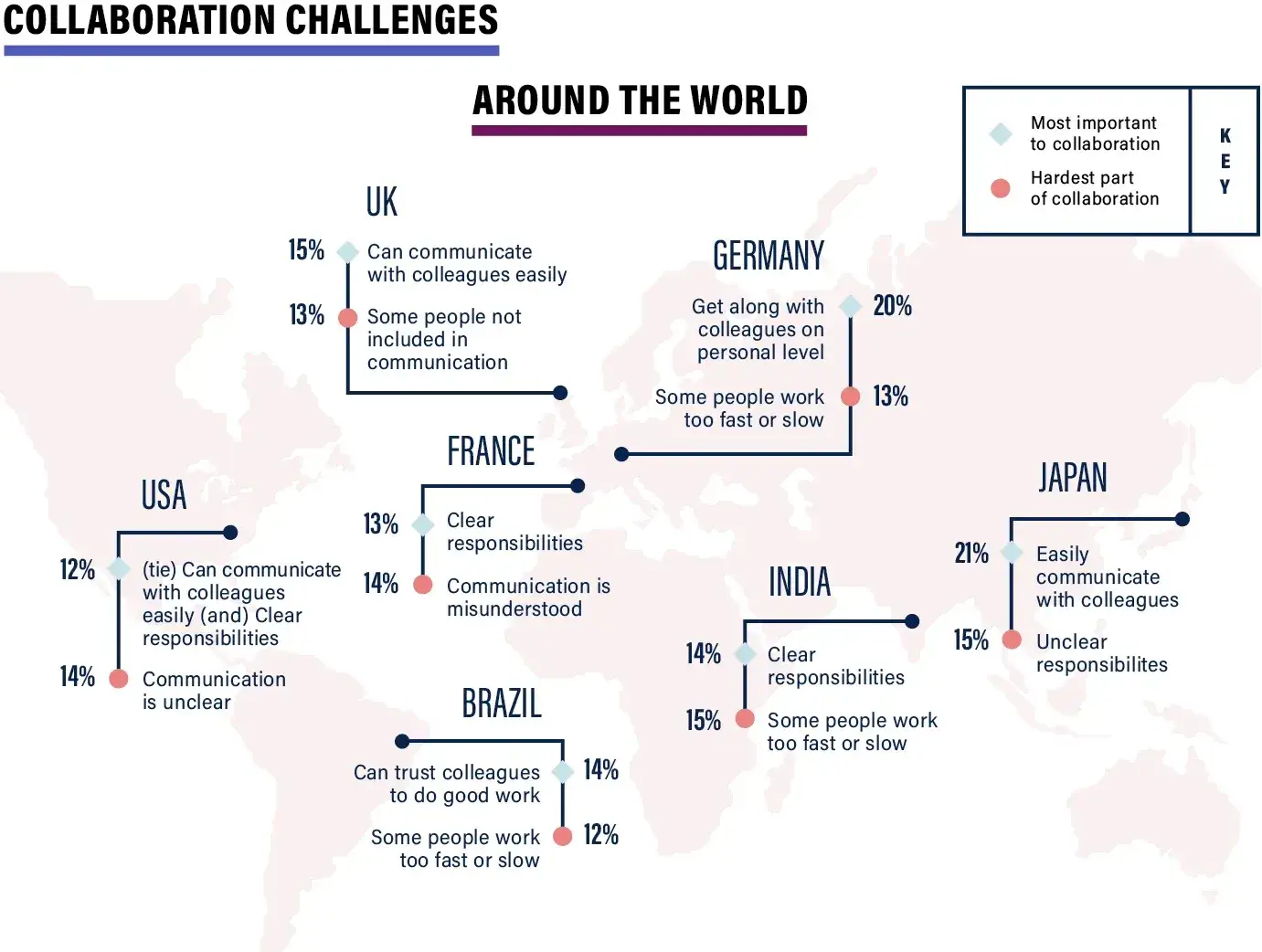
But team leaders are now facing a big challenge since companies have no choice but to shift to remote work to protect their staff from the pandemic.
Let’s take a look into the common challenges team leaders are facing now when trying to enhance cross-functional collaboration during the pandemic:
1. Managing remote teams
Businesses are now embracing remote work. Some of them have even made remote work compulsory to protect their employees from the pandemic.
This situation leads to two main problems that make cross-functional collaboration even more challenging for team leaders:
1. In most organizations, it’s now entire teams that are working remotely
2. Teams are required to work from home until further notice.
Communicating with the team is more challenging for team leaders. How to make sure that the entire team has got the latest updates you’ve shared with them? How to ensure that they receive urgent messages? And how to ensure that they actually read your messages?
The thing is, it’s most likely that remote employees will continue to grow in the future.
It’s a bit too early to say to what extend the coronavirus crisis is going to redefine the workplace. However, experts and analysts already agree that the future of work is happening already now since remote work is becoming the new norm. According to them, the shift to remote work is not temporary but will continue after the COVID-19 crisis.
💡How to overcome this challenge?
Employers need to ensure that remote employees always have access to important information and that they can easily communicate with the rest of the cross-functional team. As the pandemic is spreading at a fast pace and we don’t know when it’s going to be over, It’s important to make sure that employees don’t feel disconnected while working from home.
Read on: Remote Work: 20 Ways to Engage and Connect with Your Remote Employees
2. Ensuring flawless communication with the rest of the company
Under normal circumstances, one of the biggest — if not the biggest — problem(s) with cross-functional collaboration is the lack of communication among teams. And that’s because departments often operate as silos and create their own jargon that the rest of the organization may not understand.
What’s more, some enterprise companies use multiple internal communication tools. It is not uncommon to see that, within the same organization, one department uses SharePoint and the other one uses Google Drive or emails as the primary mean of collaboration.
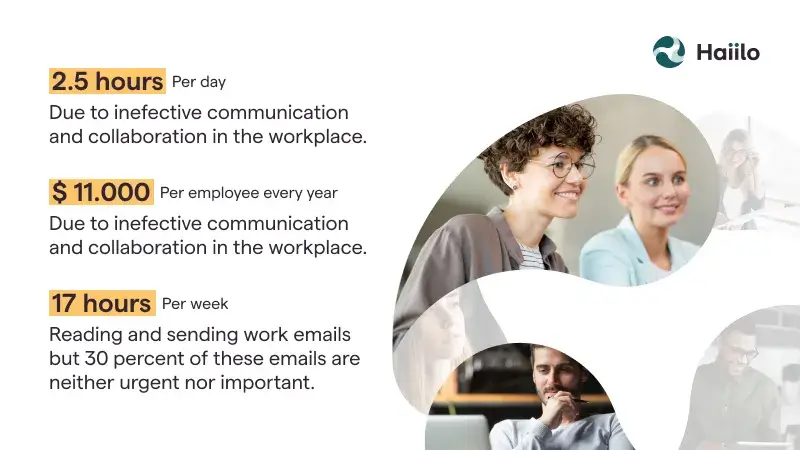
As this ecosystem of internal communication solutions has become very complex, it may result in information overload, confusion and, therefore, drop in employees’ productivity.
This issue is even more problematic during the COVID-19 crisis as it’s entire teams that are working remotely now.
How do you make sure that teams can keep up with the projects other teams are working on? How do you help your team to meet the deadlines originally set?
As teams have their own ways to manage projects and are working remotely, it becomes even more difficult to ensure flawless communication among and between teams during the pandemic.
💡 How to overcome this challenge?
If you want to maintain cross-functional collaboration at your workplace during COVID-19, you need to make sure that employees from different departments have a central place for communication, collaboration and document sharing.
Luckily, new employee communication solutions like Haiilo enable employers to connect all of their internal communication and collaboration tools and, therefore, optimize the way cross-functional teams collaborate.
Connecting the tools that align with the ways that people naturally communicate and learn gives everyone a chance to contribute and increases the likelihood of success for each cross-functional contributor.
3. Ensuring that the company goals and objectives are reached despite the COVID-19 crisis
In most industries, activity levels are dropping. Companies are closing some of their factories while others are laying off staff during the pandemic.
Even the most robust businesses seem to be affected by the pandemic — Apple, the Google parent Alphabet, Amazon, Microsoft, and Facebook have lost more than $200 billion in market value in a day from coronavirus fears.
Things are moving fast, very fast. Companies have no choice but to adjust their strategies on the fly.
The situation is pretty chaotic in most businesses because of the unprecedented crisis we’re experiencing now. Plans keep changing all the time while staff is being reduced.
In this context, it becomes highly challenging for leaders to ensure that their teams will meet their targets and reach the business goals.
💡 How to overcome this challenge?
Team leaders have no choice but to find effective ways to instantly communicate with their teams and better coordinate the prjects their teams are working on. They also need to communicate with team leaders from other department to make sure that everyone is aligned with the company goals.
4. Maintaining a good level of trust
When there is no trust among employees who work together on a project, collaboration fails.
This lack of trust disables teams from different departments to openly communicate and, therefore, successfully work towards the same goals.
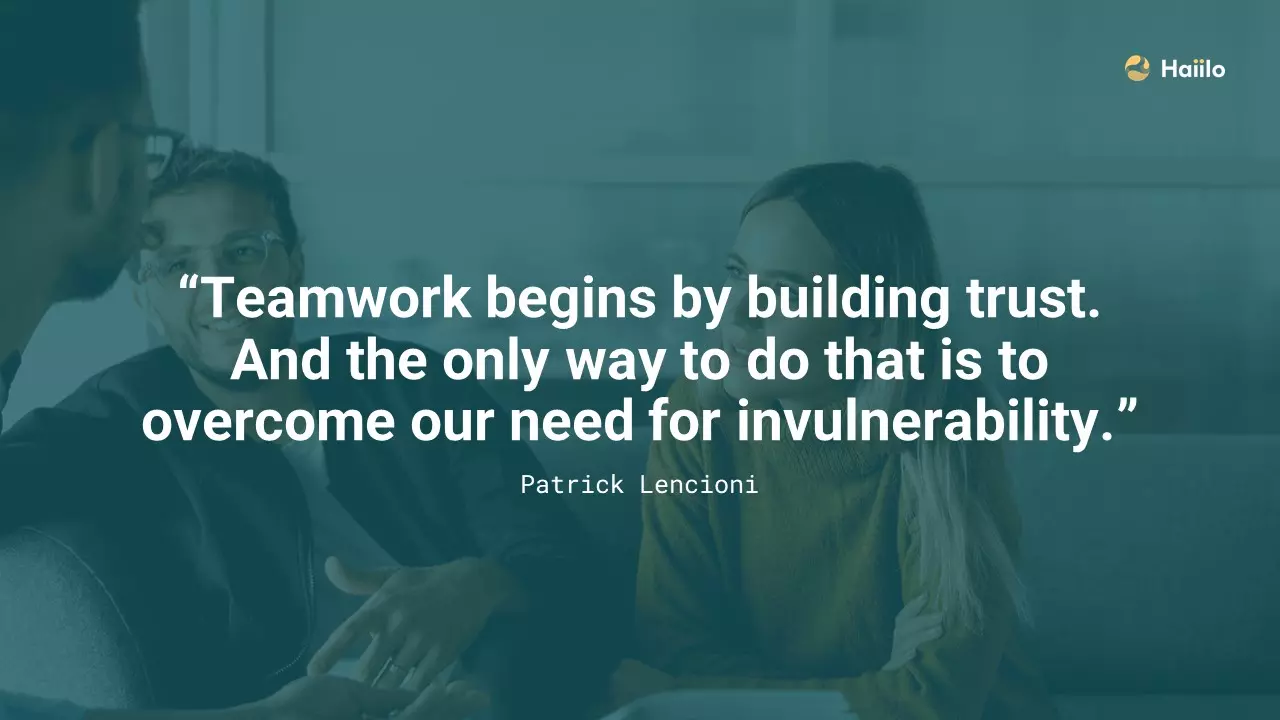
Building trust is even more critical these days. Because of the abrupted organizational changes made in response to COVID-19, employees are worried about the business and their jobs. Team leaders play an important role here. That’s why they have to find ways to build strong connections with their teams.
💡 How to overcome this challenge?
Honest and transparent communication is a must when it comes to building trust in the workplace. It’s even more important in times of crisis such as COVID-19. It is the leaders’ job to continuously build trust with frequent communication.
Leaders are the ones who can help bridge the silos among teams and develop a culture of trust by aligning the goals and incentives of the organization as a whole.
If mistrust is a barrier to collaboration in your organization, try starting with a few small opportunities for teams to work together to get quick wins.
Additionally, consider rewarding teams who are involved in cross-functional collaboration. Seeing short-term results and receiving rewards for accomplishment can help develop trust among the teams.
5. The problem of social loafing
Most of you probably remember team projects during school or college. Often, there was an individual that did not contribute as much as the rest of the team.
The same can happen in cross-functional collaboration in the workplace. Lack of individual accountability can result in, thus called, social loafing.
That’s why as a team leader, you need to foster team spirit and make sure that employees are helping each other even more during the pandemic so they can reach the team targets despite the crisis.
💡 How to overcome this challenge?
The best way to eliminate social loafing in cross-functional collaboration is to develop a set of criteria or KPIs that will not only affect the whole team but also the individuals from different departments.
Again, the individuals who put the most effort into the project realization should be rewarded and high-performers should be publicly recognized.
This is also a very good way to show the rest of the team what kind of behaviors are expected and encouraged by the organization.
6. Coping with various technologies used in different departments
Take, for example, marketing, sales and development teams within your organization. All of them use different internal communication and other tools on a daily basis and these tools make a big part of their overall job.
Sales team’s main tool may be a CRM, marketing’s a content management system while developers may use something completely different.
While it makes sense for each department to use the best-of-breed automation for their core functions, this can hinder cross functional improvement activities.
So, how can these teams adjust? The situation becomes even more complex in times of crisis such as COVID-19.
💡 How to overcome this challenge?
It is normal for different departments to use different tools based on their job functionalities. However, employers should also provide solutions that enable cross-functional teams to collaborate more efficiently, especially during the pandemic.
There are many team collaboration solutions out there today and many companies have implemented them within their organizations.
Keep in mind that it’s important to also understand the importance of having a central employee communication place for teams from various departments to always stay up-to-date with the project’s status.
7. Leading a team under pressure
Cross-functional collaboration requires a good leader who can help the team work in synergy. If there is no one who can influence the employees to continuously work as a team, the collaborative project will probably fail.
But the thing is, team leaders are under pressure because of the coronavirus crisis.
They have to maintain a certain level of activities and deliver on projects despite COVID-19. As mentioned earlier, businesses are adjusting on the fly, and strategies keep being reviewed. The pandemic is making team leaders’ jobs even more difficult.
💡 How to overcome this challenge?
Appoint a leader, or even an internal influencer, who will manage to connect the teams from various departments and help them organize the collaboration in a structured way.

This leader has to, above everything else, be an excellent communicator and motivator. He or she should also encourage more frequent, random online or offline conversations and gatherings to help teams better connect.
How to Foster Cross-Functional Collaboration In Your Company
Ensuring flawless collaboration between teams and departments isn’t easy. It’s even more challenging during the COVID-19 pandemic as employees are working remotely.
Read on: Crisis Communication — How to Communicate with Your Employees During a Crisis?
How to make sure that all employees have the information they need so they can help their colleagues? How to help teams communicate and collaborate in a timely manner? Overall, how to help teams stay productive in these chaotic and particularly stressful times?
The thing is, COVID-19 is entirely reshaping the workplace.
Remote work is becoming the norm in most organizations, which requires extra efforts from team leaders.
To enhance cross-functional collaboration while your teams are working remotely, you need to ensure that all employees can instantly access the information they need all while being able to share any new updates on the projects they’re working on.
Broadly speaking, keep in mind these tips and tricks when managing remote teams so you can help them stay productive during COVID-19:
- Share company policies and procedures with your teams in a timely manner
- Communicate key COVID-19 safety tips with your entire workforce
- Inform your employees about any new COVID-19 updates released by Governments and other local authorities
- Segment your messages based on employees’ roles, expertise and locations. For example, updates released by the Australian Government is extremely relevant for your employees based in Sydney and Melbourne, but it may not be that relevant to your employees based in London. Instead, they may prefer receive the latest updates released by the local authorities.
- Make sure you’re able to instantly notify your teams about any urgent update
- Measure the effectiveness of your IC strategy during the coronavirus crisis. It’s the only way you can identify what’s working well and what need to be changed/improved.
[Extra Tip] Encourage Cross-Functional Collaboration by Celebrating Success with Your Teams
When you have a cross-functional team working together, make their success and achievement public and social. Share it with the rest of the organization and let the others celebrate the success with them.
This kind of recognition can boost your employees’ morale and engagement. It’s even more important these days since most of your employees – if not all of them – are working remotely.
They’re probably feeling disconnected and they may also miss all the discussions and interactions they usually have with their colleagues at the office.
What’s more, their morale may be way lower than usual. Coronavirus-related news are scary and the workplace atmosphere may not be that great either since activity levels are dropping, shops and offices are closed and the number of Coronavirus layoffs keeps increasing.
That’s why it’s extremely important for you as a team leader to reconnect and build trust with your employees. One way to do so is to celebrate wins – big and small – with other teams and even the entire company.
Read on: Top 15 Employee Motivation Tips and Benefits
Many companies that use Haiilo, our employee communications platform, use it in a way to show appreciation for employees’ achievements by engaging the whole workplace in the conversation.
Sharing good news within an organization and enabling others to congratulate is one of the best way to create a healthier organizational culture during these chaotic and unprecedented times.
Final Thoughts
One of the best ways to enhance cross-functional collaboration under chaotic and challenging circumstances such as COVID-19 is to build a robust internal communication strategy.
You’re managing teams that are working remotely. That means that you need to embrace real-time communications so projects can progress without too many disruptions.
Keep in mind that the way you’re responding to the current crisis is going to have a direct impact on how your business is going to recover from COVID-19.





